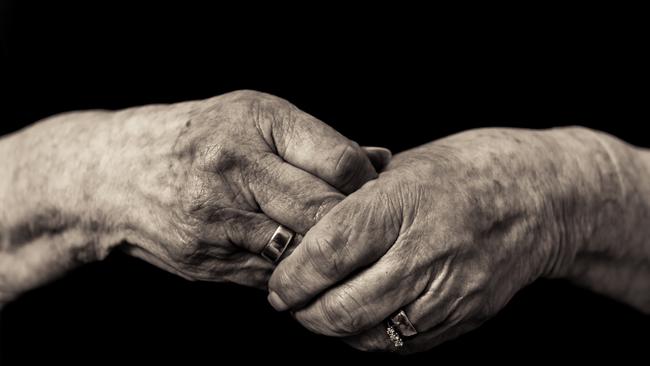Baby boomer aged-care crisis looms as vote changer
Ignore the need for wholesale reforms of the sector at your peril, major parties; it could risk your electoral chances.

Problems in aged care were always going to get worse as a growing number of baby boomers entered the system. They started hitting retirement age about a decade ago, which means now they are beginning to encounter the aged-care system also.
Developed country populations are ageing as modern medicine helps us live longer. While this presents policy challenges, it’s certainly better than the alternative.
The baby boomers are a generational bubble, with a spike in births in the aftermath of World War II. They have long been an important voting cohort because of their relative size compared with other generations. These twin particulars of ageing and baby boomer retirements are putting added strain on a sector already under immense pressure.
As a generation, baby boomers are less stoic than those that came before them. That isn’t a criticism; it points to the fact they won’t accept substandard care, nor should they. They are a modern generational cohort, burning into the socially liberal society most Western developed countries have become.
As the oldest members of the baby boom generation start to enter aged-care homes, their children are experiencing the trauma of the sector, too. Generation X therefore is starting to sit up and take notice of the problems afoot.
That’s my generation, but I had an early entree into the challenges the sector faces because my mother was the matron of an aged-care facility and we lived on site. It was one of the better publicly run aged-care homes at the time, and it was 30 years ago now, but the problems we see today existed in a microcosm then.
When my mother suffered from early onset dementia and needed professional care, she was adamant she didn’t want to enter a broken system. As difficult as it was, we had the means to care for her from home, but that isn’t a realistic option for most people – nor should it be. We need the sector to be inviting and trusted, not seen as an option of last resort that represents abandoning loved ones.
Traditionally there has been a view that issues in aged care don’t shift votes, but perhaps that is changing now that larger cohorts of new generations are coming into contact with the sector. This reality, coupled with the exposure of problems during the pandemic and the shocking findings of the royal commission, presents an opportunity and a risk for the major parties at this election.
Ignore the need for wholesale reforms at your peril, major parties; it could risk your electoral chances. Embrace the need for change (alongside a significant injection of public funding) and perhaps take political advantage of an emerging zeitgeist. Could this be the first election at which aged care takes centre stage as a vote shifter? It should.
The royal commission found that up to two-thirds of residents are malnourished or at risk of being malnourished. Page one of the interim report (titled Neglect) stated: “This cruel and harmful system must be changed … Older people deserve so much more.”
Forty per cent of submissions to the commission raised concerns about neglect. The commission cited “major quality and safety issues”, including but not limited to “inadequate prevention and management of wounds”, “poor continence management”, “dreadful food, nutrition and hydration”, “a high incidence of assaults by staff on residents and by residents on other residents and on staff” and “patchy and fragmented palliative care for residents who are dying”.
These horror stories represent official findings about a sector most of us, like it or not, will come into contact with one day if we haven’t already. In modern Australia, one of the wealthiest nations on the planet. And the worst of it? They are findings from a multi-year investigation that has only worsened in the past 12 months.
There are many things that need to change when it comes to how aged care is provided, most of which are linked to the need for wider tax reform to help fund the sector into the future. We also need to have a serious debate about the size of government, what we expect of government, and depending on the answer to these questions what role private capital should play in the provision of aged-care services, and how that should be constituted.
Governments may need to be bold, embracing policy reforms that otherwise get ruled out too quickly because they are open to negative scare campaigns come election time.
The biggest issue that needs to be addressed to start improving the sector has to be the pay of those employed in it. Aged-care work is tough and often complex. It is hard to attract quality staff and even harder to retain their services.
Many people living in aged care aren’t just elderly and fragile; they also suffer from cognitive conditions including dementia. Routines matter, certainty matters. The inability to attract and retain good workers has a profound and direct impact on these patients.
Aged-care workers are among the lowest paid workers across all sectors in the economy. Attracting and retaining staff is especially problematic in the regions, yet where are the Nationals spruiking for change? Their silence is deafening.
The Committee for Economic Development of Australia has predicted that because of the expected increase in demand in the coming years a net increase of 17,000 workers in aged care is needed just to maintain current standards – standards that have been exposed as woefully inadequate.
While Greg Hunt took over aged care in conjunction with his ministerial responsibilities for health, Richard Colbeck remains the junior minister at the vanguard. How he hasn’t been sacked is beyond me. But achieving change is beyond his abilities; the real problem comes further up the line because the sector needs ministerial representation at the highest levels of government. It should be a stand-alone cabinet portfolio held by a senior member of the government. Why Anthony Albanese hasn’t put his aged care spokeswoman Clare O’Neil in shadow cabinet is beyond me. Labor should commit to doing so in government if it wins the election, to show how serious it is about repairing the sector.
If I am right and this important policy area is emerging as a vote changer, the opportunity is there for Labor to give voters a genuine policy alternative, avoiding accusations that it is playing to a small-target strategy. Equally, if fixing the sector became a genuine Coalition priority, it could facilitate its political salvation.
Let’s hope both major parties make aged care the priority it deserves to be.
Peter van Onselen is a professor of politics and public policy at the University of Western Australia and Griffith University.




On Tuesday it will be 12 months since the Royal Commission into Aged Care Quality and Safety final report was handed down. The crisis is real, systemic and won’t go away when the pandemic dissipates. The sector was in crisis long before the pandemic struck.